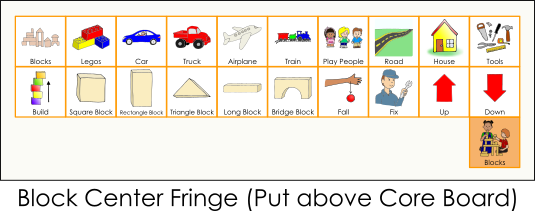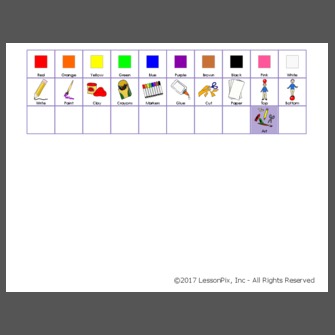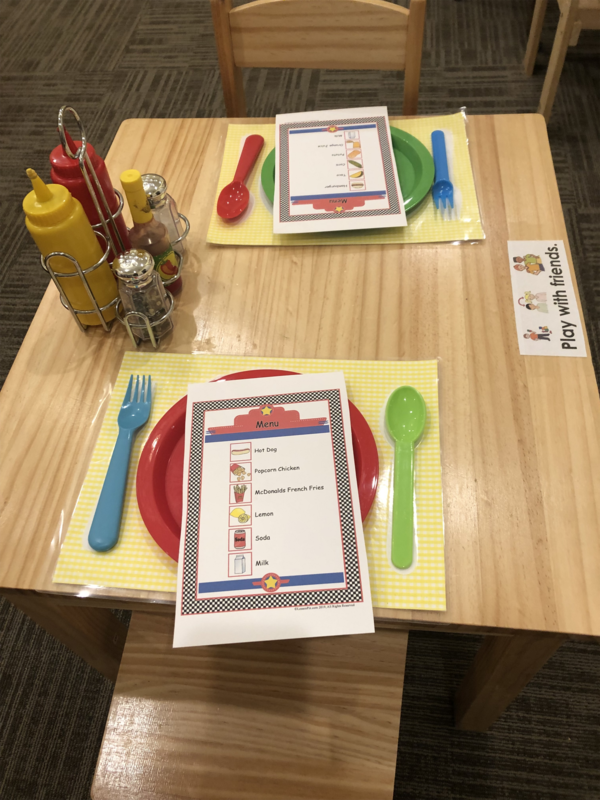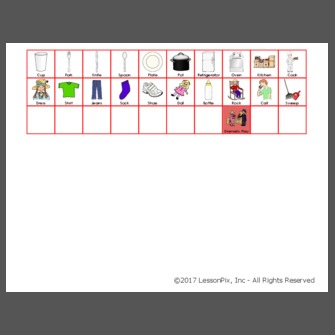
Creating the UDL Early Childhood Classroom: The Physical Environment
The basis of every early childhood program is the learning environment; the physical, social-emotional, and temporal spaces where children will interact, grow and develop. Within a rich play-based learning environment, early childhood educators implement intentional teaching strategies to support their students in meeting early learning standards. Engaging resources and learning tasks with appropriate scaffolding provide children the opportunity to develop skills and competencies they will need as they move along in education and in life.
The three principles of Universal Design for Learning are critical when creating a learning environment that is responsive to learners of diverse cultures, abilities, language and life experiences and that results in growth across all domains.
The 3 Universal Design for Learning Principles are:
- Multiple Means of Representation (the “what” of learning)- present content in varied and flexible ways
- Multiple Means of Action and Expression (the “how” of learning) – give learners varied and flexible ways to show what they know
- Multiple Means of Engagement (the “why” of learning) – use varied and flexible ways to motivate learners and maintain their interest
There are 3 environmental components that supports every child’s ability to learn: physical, social and temporal. We will explore the Physical Environment in this article. According to Mistrett (2016), the Physical Environment includes the selection and physical layout of space, arrangement of furniture and resources, as well as lighting and floor coverings, and the creation and organization of learning centers. All children must be able to safely access and engage in the learning opportunities in both indoor and outdoor learning spaces. The physical environment should encourage play, exploration, interactions, and inquiry through the arrangement of space and equipment.
Universally Designed Physical Environment Elements (adapted from Mistrett):
- The physical layout of space, furniture and resources in indoors/outdoors are accessible and safe (wide pathways, uncluttered floor, floor covering)

- Both active and quiet centers to promote uninterrupted play and work
- Appropriate visual stimulation and noise levels
- Classroom décor is more child created rather than adult created
- Furniture and equipment offer adjustable options
- Flexible seating options are available (small chairs, bean bags, inflatable discs)
- Children choose how to use the materials within learning centers
- Distinct learning centers have a range of materials and supports that are easy to access.
- Block area includes unit blocks, hollow blocks, vehicles, street signs, pencil, paper, books, people, communication boards with core vocabulary and fringe vocabulary that aligns with block play

- Art/writing area includes various types of drawing/writing tools, digital writing and art tools, clip boards, trays, storage bins, accessible scissors, paper weights, textures, sensory materials, and communication boards with core vocabulary and fringe vocabulary that aligns with the content
-

- Library area includes a variety of books (large books, cardboard, symbols, digital, iPad apps, recorded stories, etc.); headphones (noise filtering + amplifying), digital recording devices, and communication boards with core vocabulary and fringe vocabulary
- Math area with a variety of manipulatives and containers, as well as technology with open-ended problem-solving software and apps, and communication boards with core vocabulary and fringe vocabulary that aligns with the content

- Creative play area with child-sized materials that spark imaginative and cooperative play interactions, including communication boards with core vocabulary and fringe vocabulary that aligns with the content

- Materials are stored and children’s work is displayed at eye level
- Cubbies, learning centers, and room areas are labeled with photos/pictures/text
- Cooperative-use toys are available for pairs/small groups of children
- Materials include adaptable, flexible technologies that provide options in learning centers
Additional Supports
- Tables/chairs are sized or modified to meet children’s needs (e.g., to make sure feet touch the floor and forearms rest on table)
- Use bouncy bands, rocking chairs, or inflatable discs to allow active movement
- Use shapes, outlines or pictures as targets on the floor so children know where they should line up or sit
- Modify writing implements and toys to make them easier for children to hold (e.g., build up handle)
- Arrange the space for specialized mobility equipment (e.g., walker, power chair), adapted access to curriculum, or child specific AAC technology (e.g., communication device)
- Offer easy to use accessible items: light boxes with translucent objects, large, Velcro or magnet blocks, inflated balls
- Include specialized equipment (e.g., slant boards, loop scissors, hand over hand scissors, adapted keyboards, switches) to help children be more independent
- Have book holders, books with page fluffers, digital books, and pre-recorded books available so all children can participate in book reading
- Include curved spoons/forks and non-slip bowls/plates at lunch time
- Provide game spinners with single switches and adapted battery-operated toys/games
- Have technology and apps available that align and extend learning center activities. Some examples are: Tea Party (TOCA), Art Maker (ABC School), Magnetic Alphabet (DotNext), Mr. Potato Head (Originator)
 Facebook
Facebook Twitter
Twitter Pinterest
Pinterest